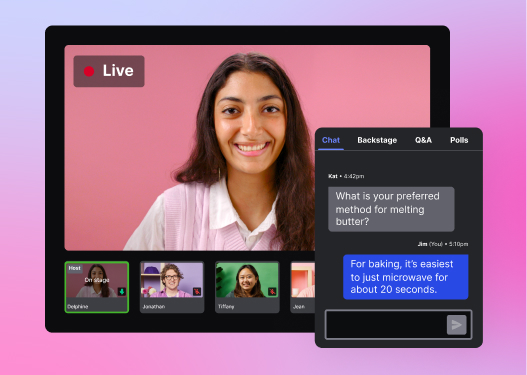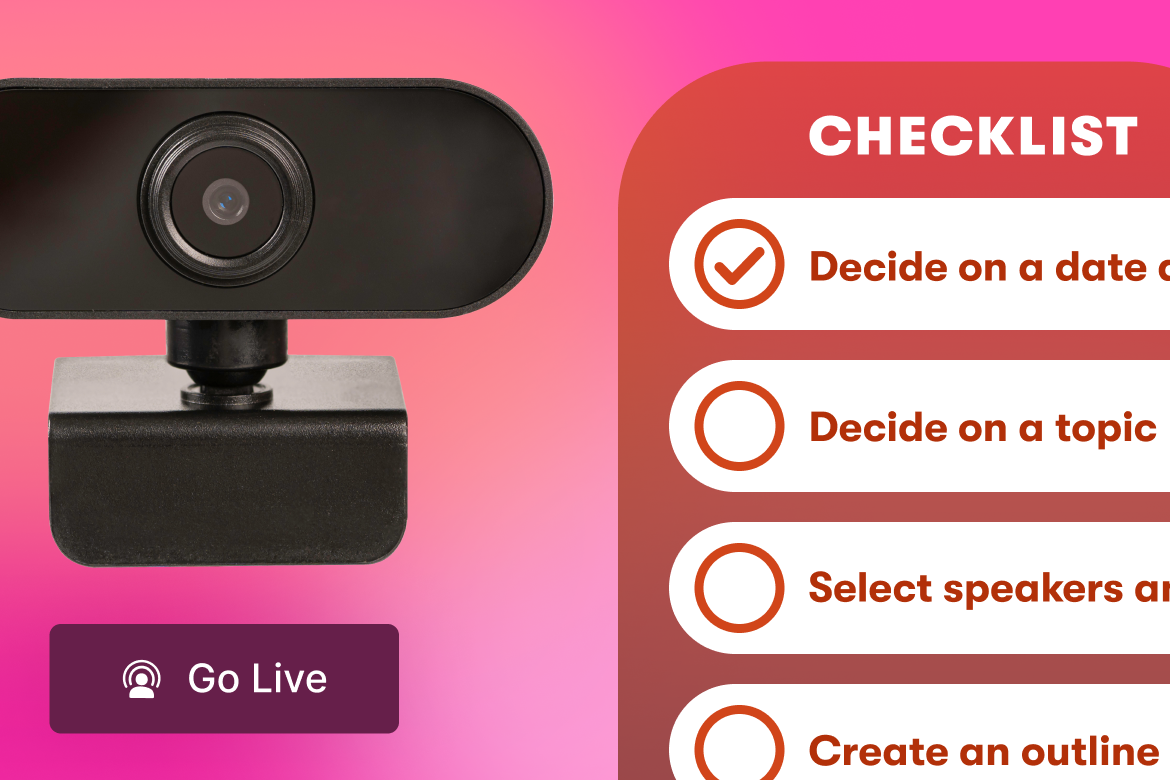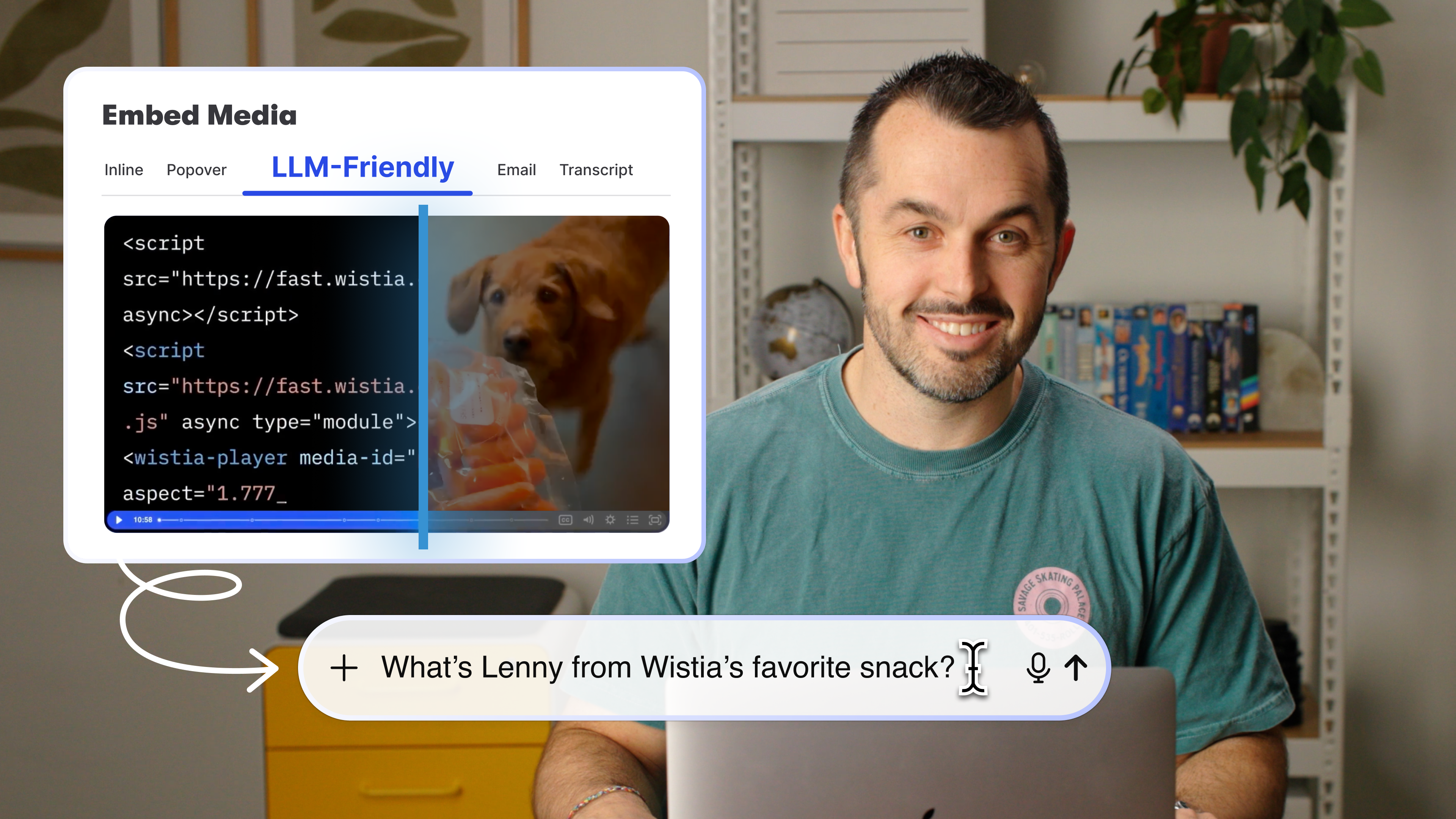6 Tips for Live Virtual Events to Awe Your Audience
January 24, 2022
Topic tags
While some businesses are venturing back to in-person events, virtual events aren’t going anywhere. About 94% of organizers are planning to host a virtual event in 2022, and almost half plan to host more virtual events in 2022 than in 2021.
Since the COVID pandemic began in 2020, organizations have been testing the limits of virtual events, hosting everything from one-time webinars to full-scale virtual events. If you’ve tried it yourself, you know that having a successful live event online requires similar considerations as your in-person events.
Virtual events require that you provide a great experience with quality content, and the event has to be highly engaging. That means your audience needs to walk away with some seriously actionable information and guidance. And it’s still important to measure the impact of your virtual events — which, it’s worth noting, can be just as tangible as that of in-person events.
In this article, we’ll cover six important tips for your virtual events, drawing on real-world experience of marketers who have gone above and beyond to host killer virtual events in the last year. Read on to learn the best practices for putting on a live virtual event!
1. Master the basics of production
Production is the backbone of a solid event. Unfortunately, not even free swag or the most captivating speakers can make up for a poor connection or unstable audio. Keep your audience engaged with the main event by ensuring it will go off without a hitch. Take our word for it: Have your production basics in check before you go live.
At a minimum, to put on a reliable live event, you’ll need:
- A stable internet connection
- Quality video and audio equipment
- A tech-savvy teammate on call to moderate and troubleshoot issues
It’s a very good idea to do a test run of your entire event beforehand with the equipment you’ll be using. This will allow you to spot any potential issues before the event is happening and give you ample time to troubleshoot them.
2. Make it worth people’s time to attend
The best way to keep an audience engaged and coming back for more is to produce content that people are passionate and excited about. Whether you’re introducing a new product category or talking about the latest updates within your company, make sure you’re delivering value to your audience. There should be a reason it’s more worthwhile to attend your event in real time, rather than watching the recording later.
“There should be a reason it’s more worthwhile to attend your event in real time, rather than watching the recording later.”
Zoe Ludwig, user education lead at Notion, says, “It’s important that people feel like attending a live session will bring more benefits than a recording or article.” There are many different ways to do this. For example, you could give people a “first look” at a product or feature you’re planning to unveil to start building hype around it. Or you might start a discussion about industry trends and predictions and allow people to have breakout sessions or ask questions directly to the speaker.
As one of the first steps of your planning process, consider setting a goal around what you want people to gain from attending your event. You might also contemplate how you want attendees to feel. For example, you might say that you want people to leave with a deeper knowledge of a specific industry issue, and that you want them to feel more confident in explaining this issue as they return to their teams. Getting clear about your goals will help you as you continue to plan your event.
3. Invite industry leaders to speak at your event
Inviting well-known or well-positioned people within your field will help your company build credibility and potentially attract a wider audience. If you secure a speaker with a large following, they may also draw attendees from their own networks — that’s a win-win for everyone involved.
Shogun did this with its recent eCommerce event Xperience Commerce ’21. The event featured speakers from Klaviyo, Postscript, TULA, and Beardbrand speaking on different panels. All of the speakers are eCommerce related and brought their own expertise to the collective event.
Look for speakers who are relevant to your company or chosen topic. For example, if the topic of your live event is social media, try to find speakers, panelists, and partners from social media platforms or management tools, or social media managers at reputable companies.
You can source speakers a few different ways. Stay on top of social media and who’s trending — this can help you find new professionals and keep them on your radar. You can also look at the “About Us” or “Leadership” pages for well-positioned companies you admire. And don’t be afraid to use your own network to find relevant speakers; sometimes a warm ask is the one most likely to work out.

All-in-one Video Platform
Streamline Your Webinar Process
4. Give away something fun to attendees
An easy way to get people to show up for an event (virtual or otherwise) is to offer in-person attendees free swag. But, since you can’t exactly fire a T-shirt cannon via Zoom, you’ll need to get creative.
A lot of marketers are mailing out the free stuff they’d normally give out in person. Maureen Jann, chief marketing strategist at NeoLuxe Marketing, sent all the event attendees swag bags that the speakers referred back to during the live event. Jann also shares that “for a recent event, we sent our registrants coloring pages and colored pencils and challenged them to share their finished product during the event to win prizes.”
Take a page from NeoLuxe’s coloring book and send your audience some goodies to enhance their experience. Here are some ideas for freebies/swag to send out before your event:
- Gift cards for DoorDash, UberEats, or another delivery service so folks can order lunch or dinner while they watch your event
- Specialty cheese, meats, and crackers or something similar so they can make their own appetizers or charcuterie boards
- Your own product, while offering attendees special features or trial subscriptions
5. Encourage audience participation and interaction
We love NeoLuxe’s coloring activity because it encourages people to engage with each other. In-person events really shine when they feed off the energy and participation of the crowd. So how can you get people going in the same way, even though you’re virtual?
Daniel Shiao, founder of Attention Retention, says, “A former boss of mine proposed a goal for virtual events, which is to get the audience touching their keyboard every five minutes. This could be done [a number of ways]. Encourage the audience to participate and by definition, they’re engaged.”
Use these features to encourage your audience to interact:
- Live polling — ask for people’s input and then share the results to generate even more discussion
- Audience Q&As throughout the event
- Pop “quizzes” (the fun kind!) — you could even tie a giveaway into this and award people with the right (or most popular) answers
Establish ground rules at the beginning of the event (or each interactive session) about how attendees should participate. Whether they should be using a chat feature or raising a hand via Zoom to ask questions, it’s important to get everyone on the same page — then let the fun begin!
6. Ask for feedback to get ideas for your next event
In order to measure success and understand how you can improve future virtual events, you need to get feedback from your audience. Adelina Karpenkova, content marketing manager at Joinative, uses email, Slack communities, and surveys to “discover which topics our attendees would like us to cover, which allows us to meet their expectations.”
Encourage feedback by following up with your audience members after the event with a survey. Ask questions like:
- “How likely are you to apply what you learned in our sessions to your work?”
- “Did you find our partners to be relevant/add value to the event?”
- “What topics did you find especially relevant?”
- “What would you like to see from us in the future?”
Make sure to leave space for attendees to elaborate on what they enjoyed and what they’d especially like to see in the future, as well as any questions they might have for you.
Keep going: Measure the success of each event
Measuring the success of your virtual events is vital for understanding whether they’re helping you meet your goals. Depending on what your specific goals are, your relevant metrics will be different. Some potentials include your number of attendees, how long people stayed, and how engaged people were throughout the event.
You could also check in with your sales team about the number of demos requested and meetings booked after the event. You can start to take a look at the number of demos and meetings that you were able to book from each event and use that information to compare different events to understand what worked well.






